The planning stages of a new garden bed is one of my favorite parts of gardening. It’s so fun to design something out of nothing. My goal is always.. Designing a garden for non-stop color!
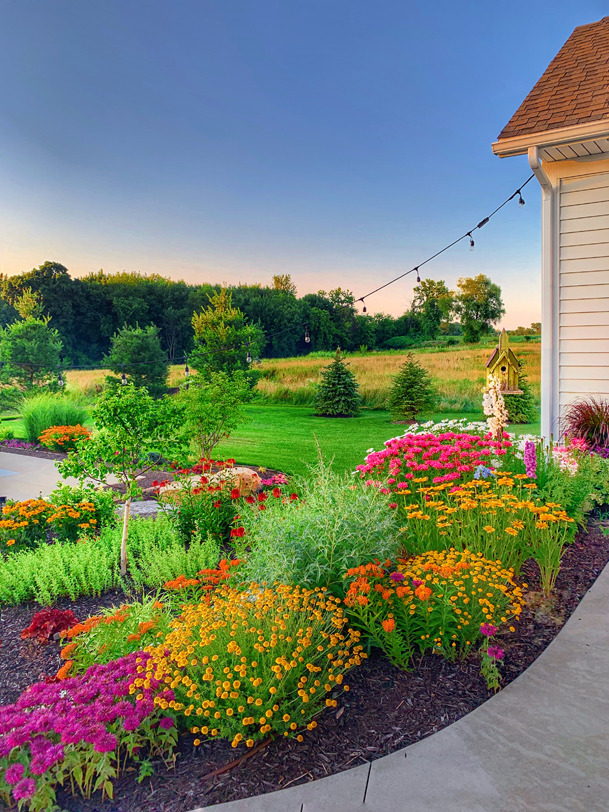
*This post contains Affiliate links
I literally like to sketch out my garden on graph paper while I’m sitting in front of the area.

Then, literally laying out a hose or something similar to get a visual of the shape I want the bed to be and how big of an area I’m working with.
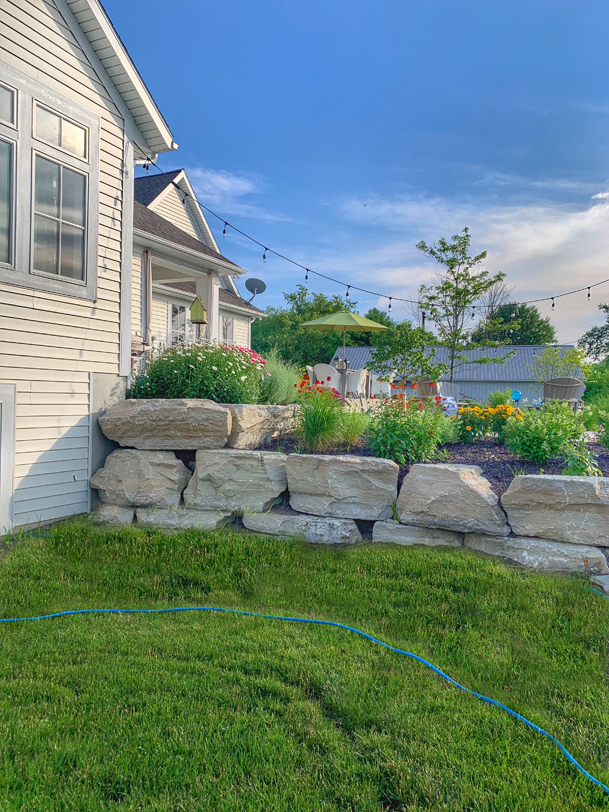
Once you have figured out where the garden will be and the size you want it, you’re ready to design.
There are several factors to consider before plant selection.
- Shape and type of garden
- What gardening zone are you in
- Soil type and moisture
- Is it sunny or shady?
GARDEN SHAPE OR TYPE
I love my garden beds to have curves, and my favorite type of garden would be a cottage style garden. Lots of blooms, colors and textures. Now it does depend where the garden is going, in the front of my house I like it to look a little more formal, more landscaped with a few tidy perennials added in.
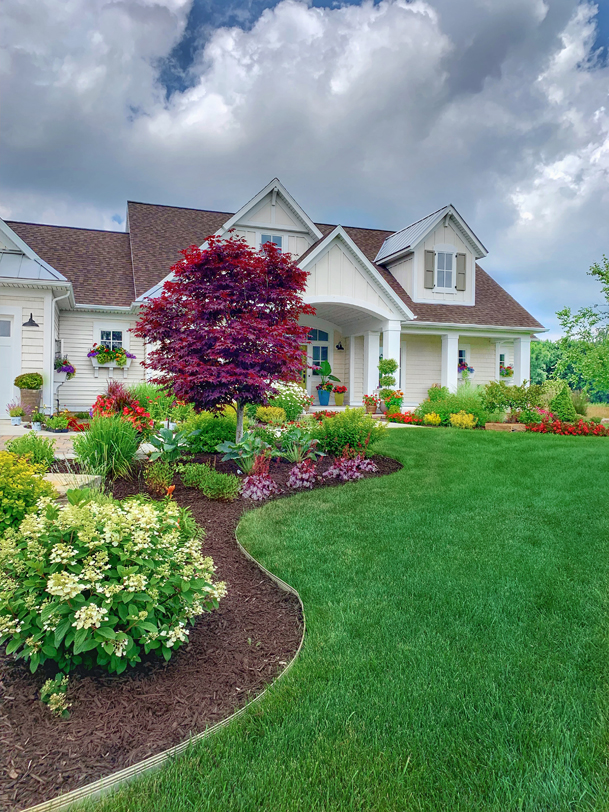
I also enjoy themed garden areas, like my butterfly garden where the plants are chosen to attract butterflies.
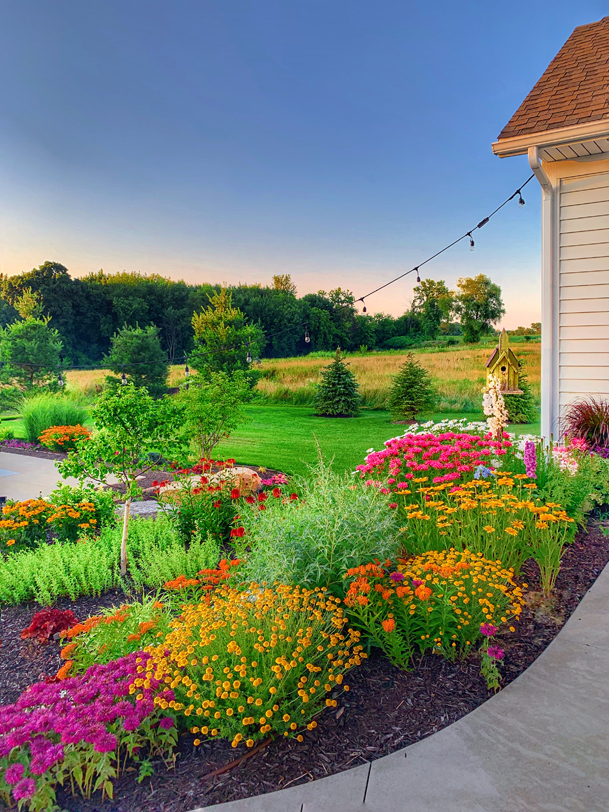
Or possibly a hummingbird garden or a monochromatic garden, where the colors are similar. I also tend to like bright primary colors where you might like soft pastels.

The point is, a garden is there to enjoy, there’s always gonna be tweaks you want to make but that’s the nice thing about perennials, you can move them! If you haven’t planted a garden before, start out small. It can be overwhelming when first starting, it’s always easier to add on to it later after you know you like it and it’s maintainable.
WHAT GARDENING ZONE ARE YOU IN
This is the number one thing you need to know when picking out a plant. A plant tag will always tell you what zone the plant can survive in, and more than likely if they’re selling it in your area it’s probably gonna work for your home. When figuring out what Zone you live in check the plant hardiness zone map or search by your zip code.
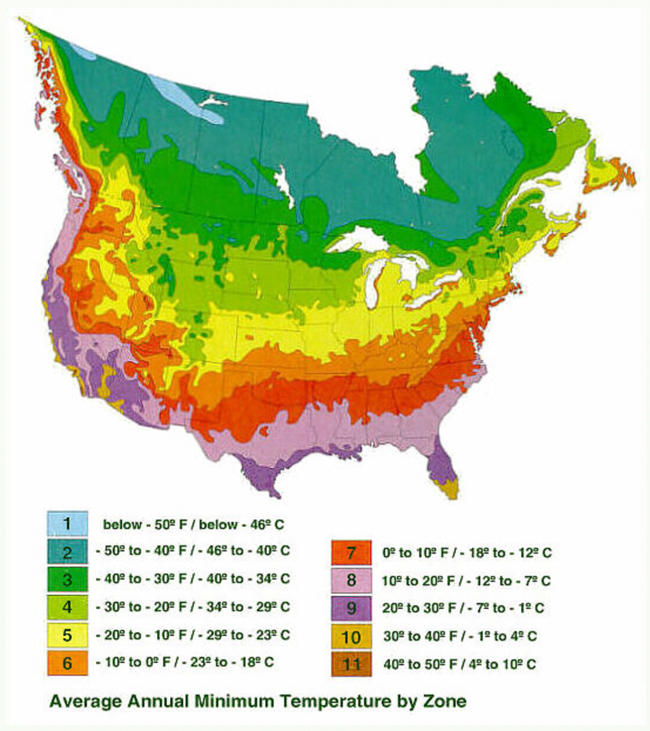
This will also help you to know when it’s safe to plant in the Spring, according to the last frost date.
SOIL TYPE AND MOISTURE AVAILABLE
Certain plants do better in certain types of soil. I’ve lived in several different houses and each one has had different soil. Even in my yard now I have different types of soil in different areas. My house is a new build so around the foundation there’s some sand that I run into and also some clay. I have areas that are more wet and others that dry out quickly. Also soil PH, I‘m still learning this one.. but there’s definitely plants that like a more acidic soil and others that like alkaline. You can get soil testing kits or you can search for places to send samples in to. Just so this part doesn’t scare you.. In my 25 yrs of gardening, last year was the first time I had my soil tested. Knowing the soil type is as easy as digging a shovel full.. the rest can wait for IF you have any concerns.
Plant tags are also good about telling you whether the plant likes moist soil or whether its drought resistant.
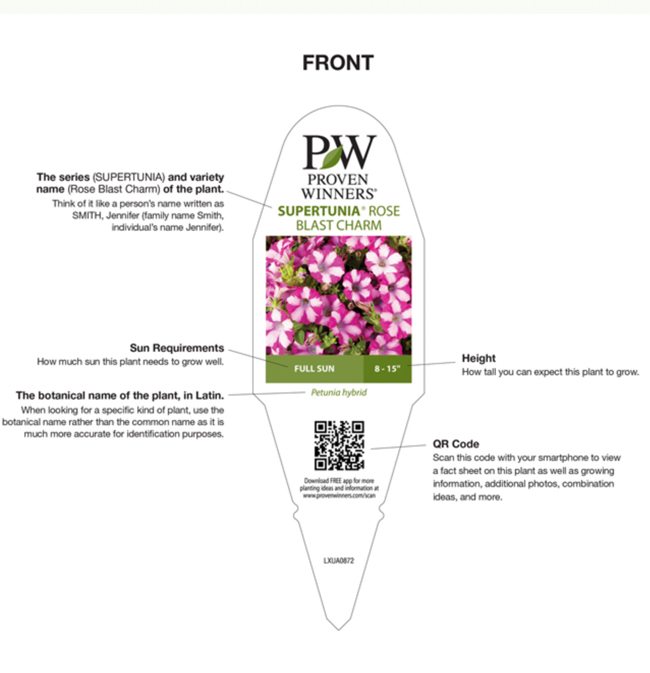
If it says it likes good drainage ..It will not do well in clay soil, but it might do great in sandy soil. If a tag says drought tolerant..then you can consider an area that gets less water.
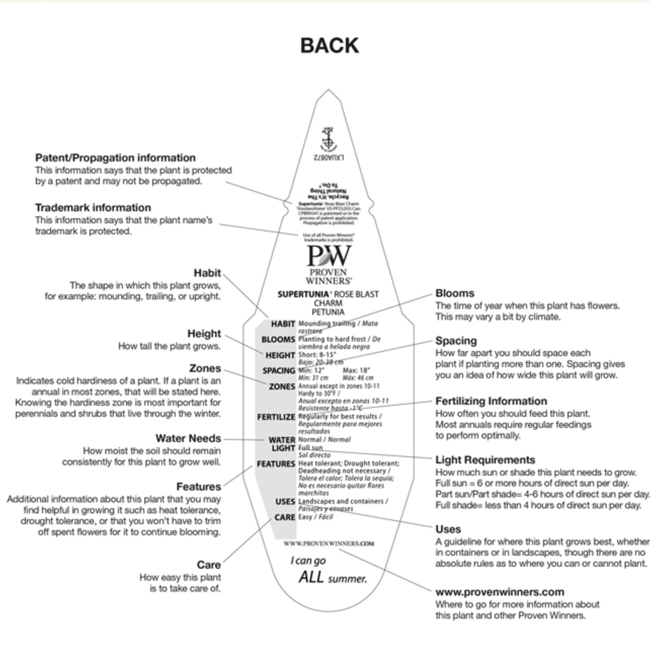
This is also where Google is your friend. I am always googling ..Plants that like wet feet…Plants for clay soil…etc. This blog post would be way too long if I tried to incorporate all the plants for every soil.
IS IT SUNNY OR SHADY
This is very important to know before selecting plants. Is the area full sun..meaning 6 plus hours of sunshine a day? Is it in part sun..meaning 3 plus hours of sunshine a day? Is it shade or part shade? (A light meter can help you figure this out). It might get both, certain plants listed part shade will do better in morning sun situations versus hot afternoon sun. I have an area that only gets late hot afternoon sun but it can’t be considered full sun because its not 6 plus hours, in that situation there are certain plants that will tolerate sun or shade. Again, Google is your friend and the plant tags as well.
Okay…now that we got the have-to’s out of the way, on to the FUN part … Designing a Garden for Non-stop Color!
My top 4 things I consider when selecting plants for non-stop color-
1. Various heights
2. Foliage texture and color
3. Bloom times
4. Color combinations
VARIOUS HEIGHTS
My last blog post, 3 perfect places to plant a perennial garden, covered what hardscapes were and how adding a focal point or larger shrubs to an area, creates a good visual or backdrop for the perennials that you’ll plant. So if you’re starting with an area that has no hardscape such as a fence, porch, patio, etc. Think through something you could add as a backdrop, an arbor, a trellis, perhaps a bench or something as simple as a birdbath to design around.
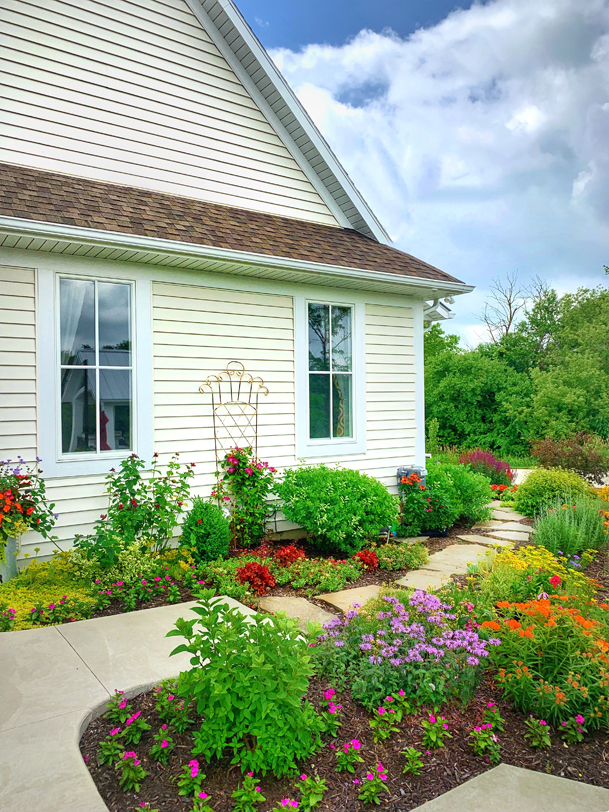
Then think about adding in some larger living backdrops, maybe a small ornamental tree, some evergreens, flowering shrubs, maybe a Burning Bush for Fall.

Holly bushes or winterberry shrubs for winter interest. Once you have a focal point or some larger shrubs, it’s easier to work out from there.
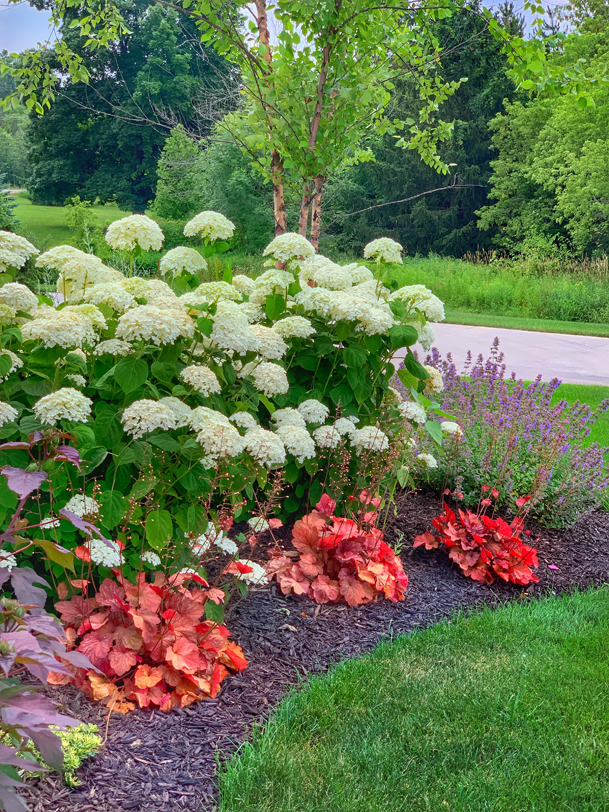
I then love to add ornamental grasses for the texture they give as well as the height. There are so many to choose from, short and tall. Some of my favorites are –

Hakonechloa Aureola is a great shade lover!
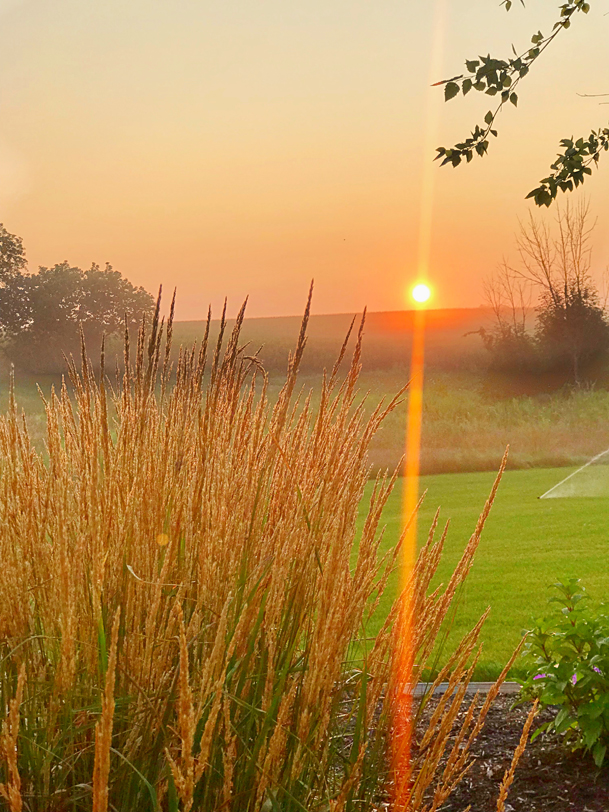
Karl Foerster Reed Grass gives such great height towards the back of a garden, with wheat-like plumes that start in the spring and last all through the growing season.
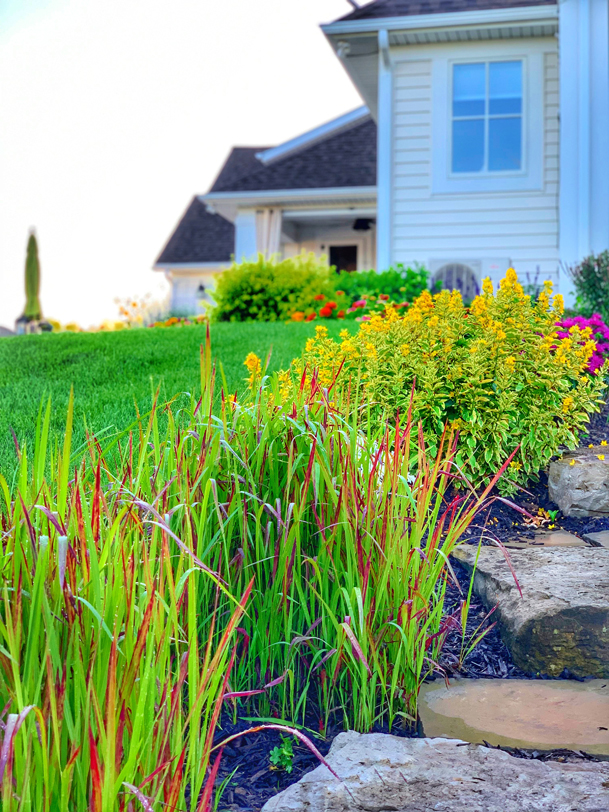
Red Baron Japanese Blood grass, a shorter variety of grass with red tips, growing even more vibrant towards Fall, perfect timing!
Using Taller perennials in the back or near the middle and working your way down to the shorter plants in the front is also something you want to work towards, so all the plants will be seen. Once again the tags will tell you the height that each plant will grow to. Maturity of a plant can take a few years however.
FOLIAGE TEXTURE AND COLOR
Foliage texture and color is key, that way when nothing’s blooming there’s still color. Grasses as mentioned above are one of my favorite textures in a garden and my list includes lots of colors as well. Trees and shrubs also have a variety of foliage colors to choose from, as well as so many great flowering ones. My favorite perennials for foliage texture and color are hostas, ferns, and Heucheras.
Hostas are fun because they come in so many varieties, as well as so many sizes, I have some that are 30 inches tall.
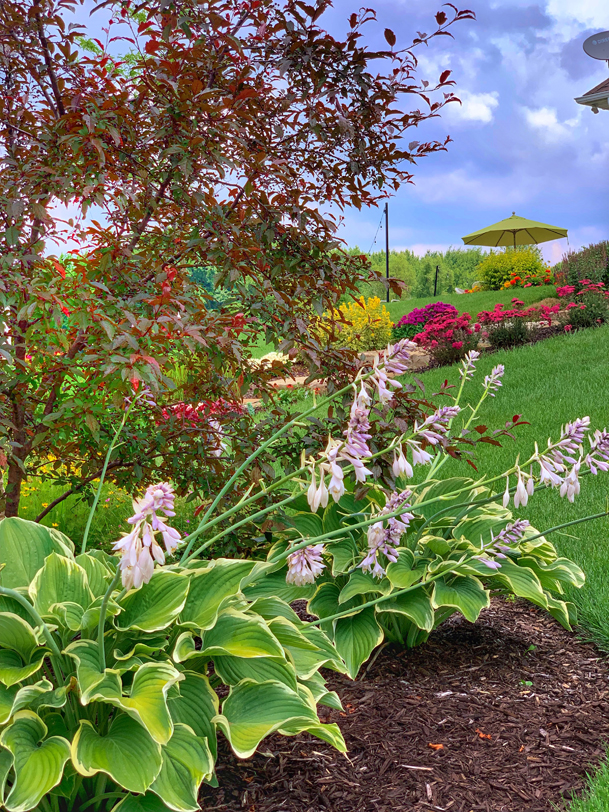
I’m not certain what this Hosta pictured is ..possibly Royal Wedding..? There’s another with huge blue-green leaves and chartreuse edges like Frances Williams. There are really small ones with bright yellow thin leaves that are wavy, like Wiggles and Squiggles. Hostas have hundreds of varieties!
Heucheras as well, also known as Coral Bells have lots of sizes and colors. My favorites are the red ones.. Like Cherry Truffles or Cinnamon Curls.
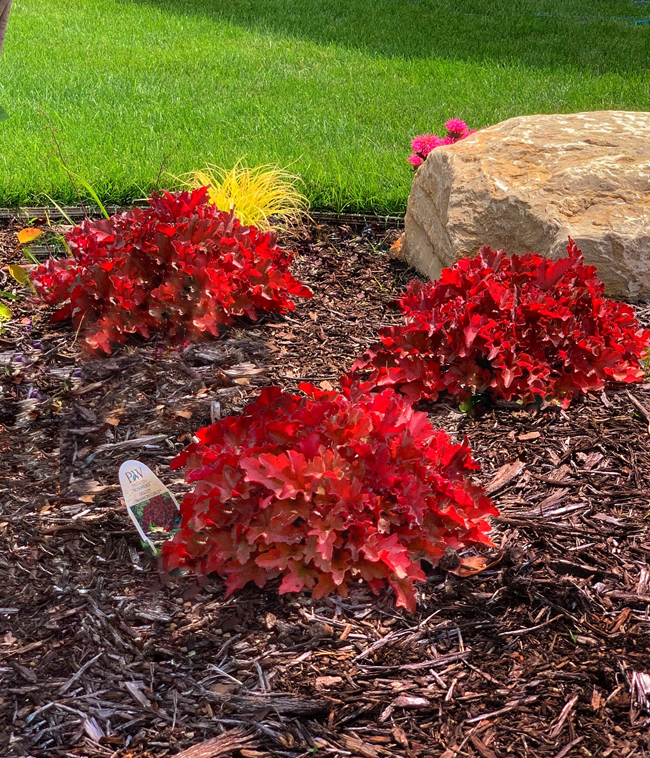
They can be so vibrant in the landscape or surrounding a tree. Right now I believe I have a least 8 different varieties in my gardens.
There are lots of perennials that I would grow just for their foliage texture even if they didn’t flower.
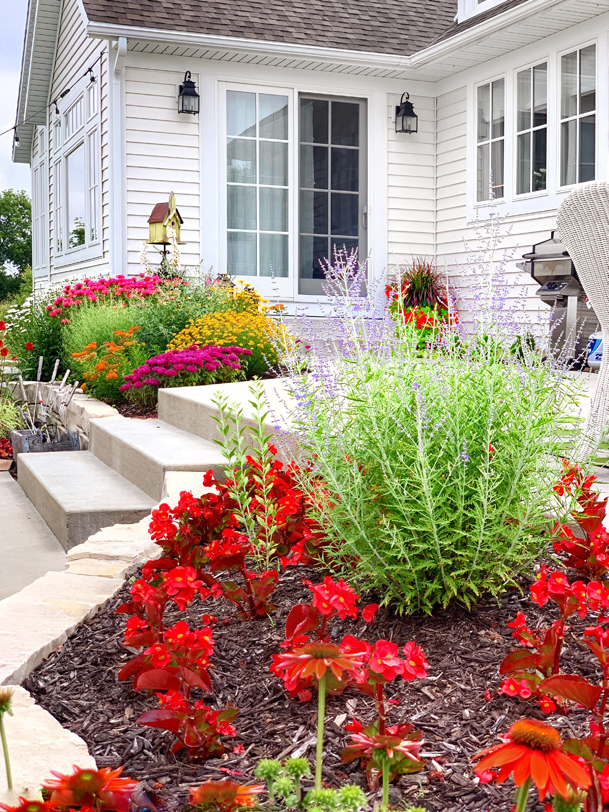
Russian sage is one of them..such a pretty plant with lacy blue green foliage.
BLOOM TIMES
This is one of the more difficult aspects to consider when designing a garden for non-stop color. There are most likely plant lists with bloom times for your specific area, but what I like to do is keep a garden journal, writing down when things in my yard are blooming as well as yards in my area. I’m always slowing down as I drive by homes that have something in bloom, having to make sure what it is, and obviously if it’s something I don’t have …well I might be making a detour on the way home, to the garden center! LOL
So I always go through each season and think through what my favorite flowering plants are that I might want to include.
Early Spring
I always include bulbs. Tulips, Daffodils, Hyacinths, Alliums to name a few, usually tucking them in behind something larger like Hostas or other perennials so the foliage can die back while hidden.
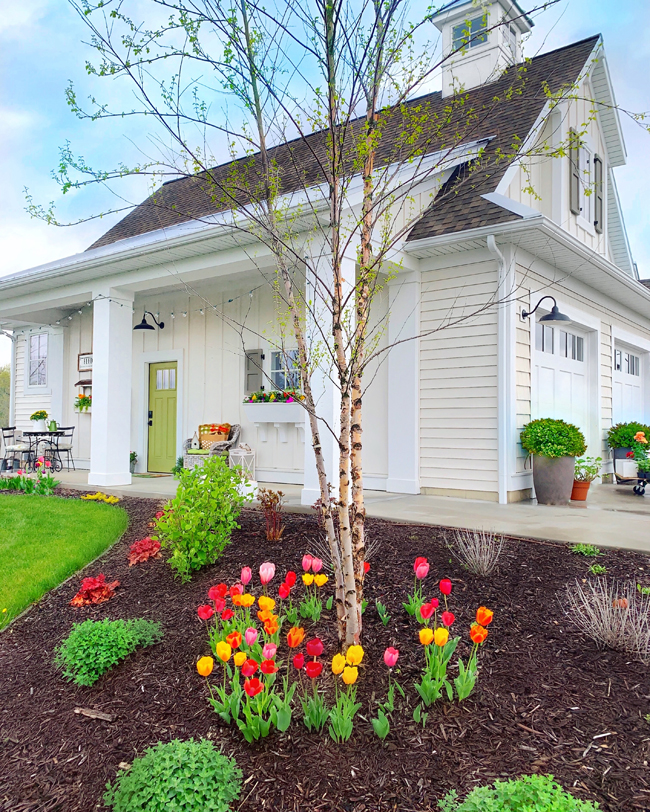
(Or my favorite trick..painting the Alliums after they have faded) You’ll get an extra month out of them while the stems are dying back! 😉

Other early Spring flowers might include Candytuft, Creeping phlox, Dianthus, or Sea thrift. These all look great along the edge of a bed because they are low growing.
Spring
Shortly after the bulbs and some of the ground covers have bloomed, the Geraniums, Coral Bells, Lady’s Mantle, Brunnera and Astilbes start, all a little bit taller than the ground covers.
Late Spring
Next to bloom..Baptisia, Hostas, Salvia, Peonies, Lady’s Mantle, Foxglove and Clematis if you’ve added a trellis or arbor.
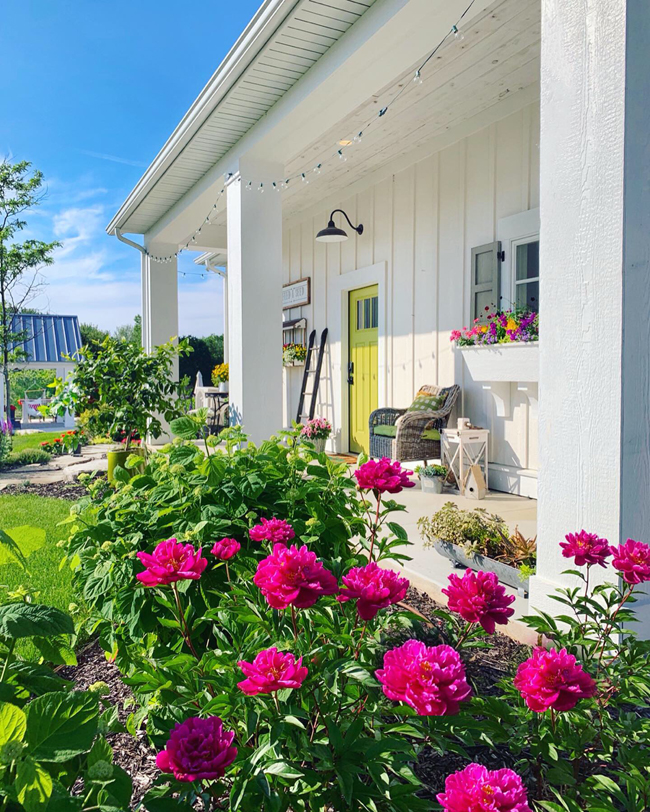
Early Summer
Yarrow, Lavender, Daisies, Bee Balm, Butterfly weed, Catmint, Veronica and Delphiniums.

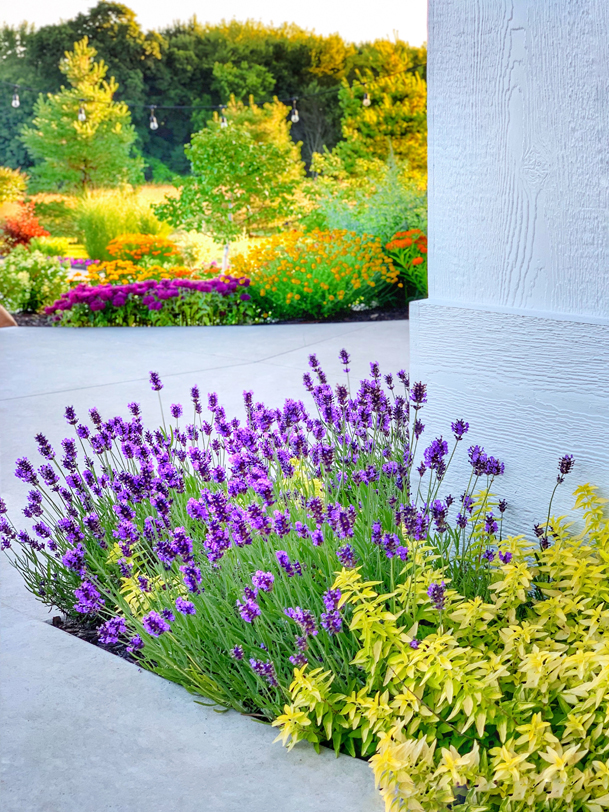
Summer
Heliopsis, Hibiscus, Liatris, Tall Phlox, Speedwell, Russian Sage, Coneflowers and Black-eyed Susans.
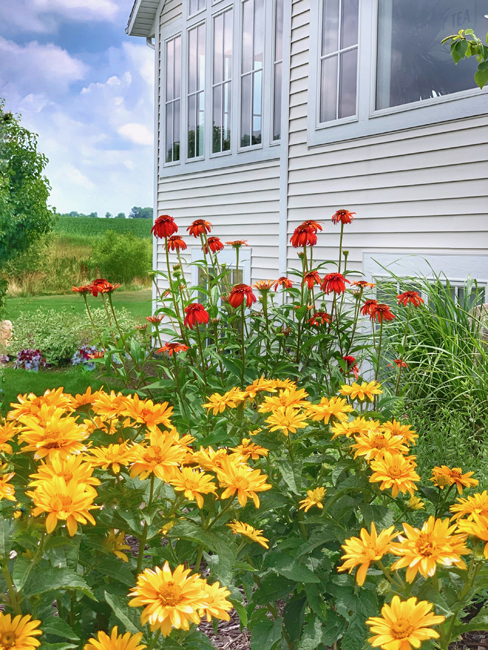
Fall
We can’t forget fall…Anemones, Asters, Hyssop, Joe Pye Weed, Lobelia, Mums, Stokes Aster and Sedums.
Of course this is a list of my favorites, there are many more perennials out there to choose from when designing a garden for non-stop color. Depending on how big the bed is I’m creating..I might start by choosing 1 or 2 from each list here and keeping the heights in mind as I arrange them. Plant tags also will sometimes tell you companion plants that work well together. I try not to plant two of the same colors together, but rather repeat that color farther down in the garden. It’s also beautiful to have a couple of things blooming together that compliment each other..
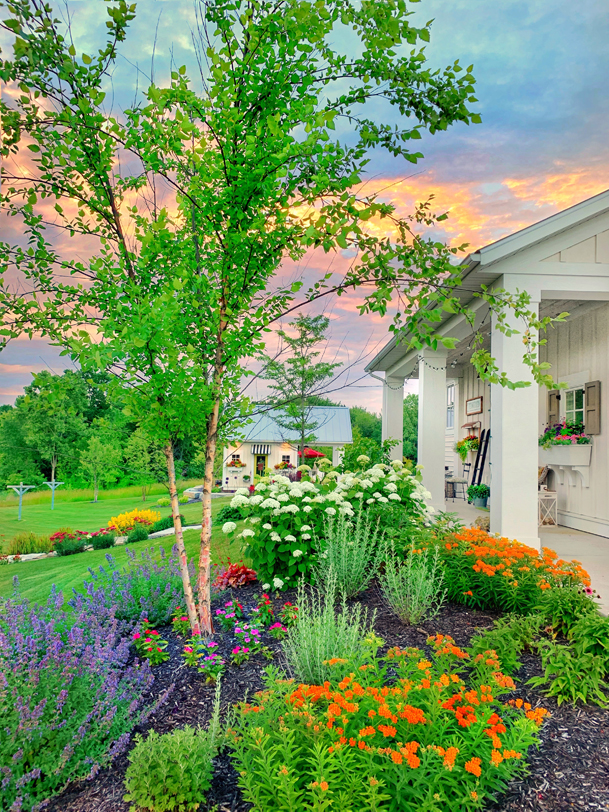
I love when my Butterfly Weed is complemented by the Catmint or the Daisies with the Bee Balm, they make a stunning pair as well.
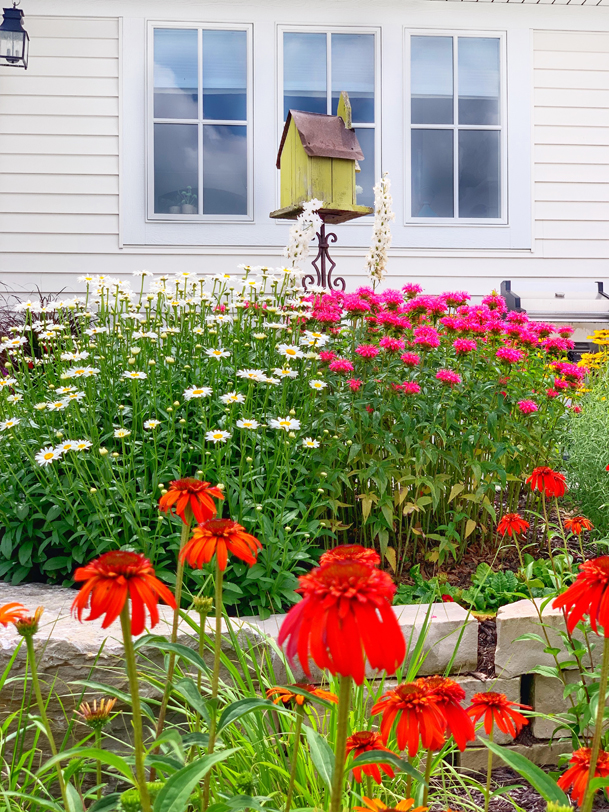
Lastly I always leave a few small spaces to add in annuals..they are a fun addition when waiting for perennials to mature and fill in, and also provide color for the whole season.
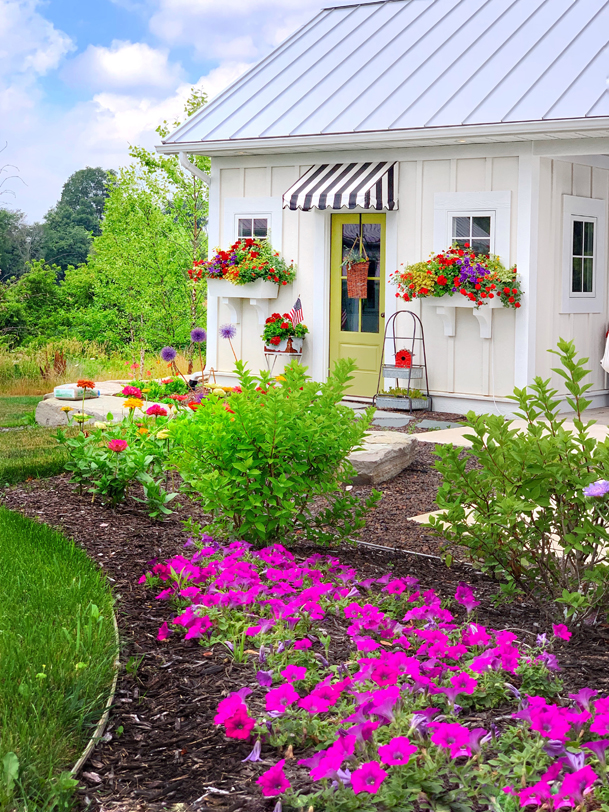
The nice thing is, it’s never set in stone. Perennials don’t mind being moved around. If it doesn’t grow well where you planted it initially or it got taller than the plant behind it, whatever the case, you can always try a new spot.
So many of the plants you see here are available through the Proven Winners website, you can use their plant/search! So why not grab a chair and plan out your new garden bed?!
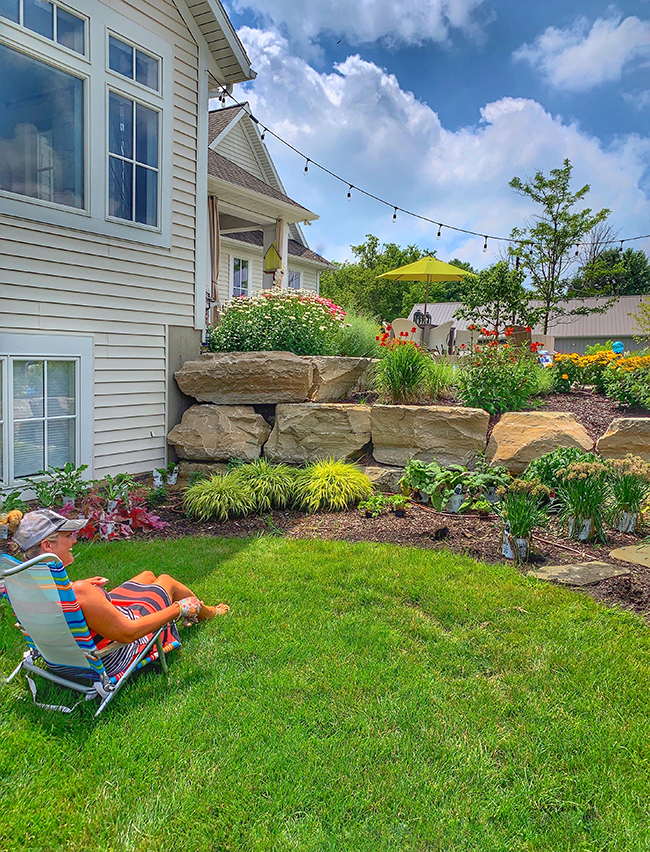
You’ll want to enjoy that thoroughly..because the next step is the prep work for preparing your bed, purchasing your plants and finally the actual planting! That’s where you’ll get your workout;)
Stay tuned for my next blog post friends!
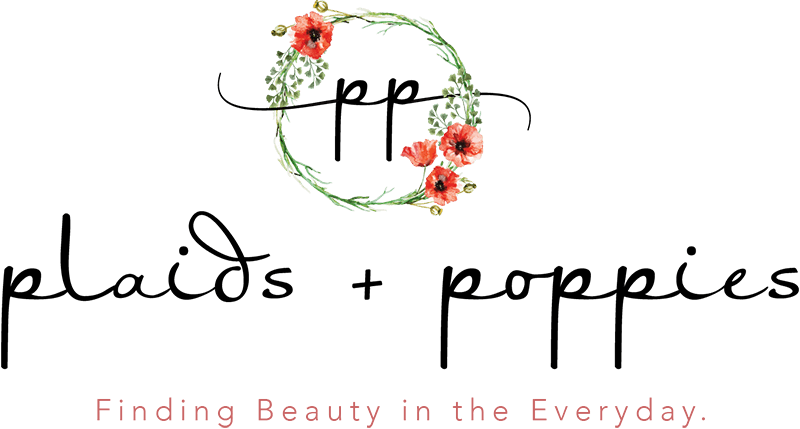
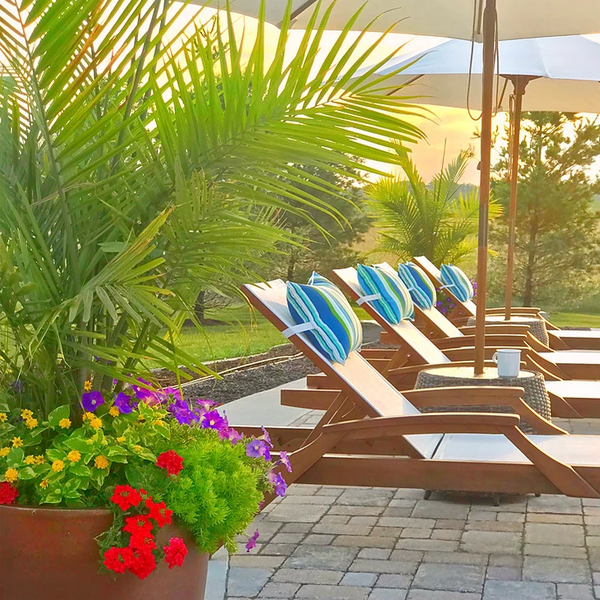
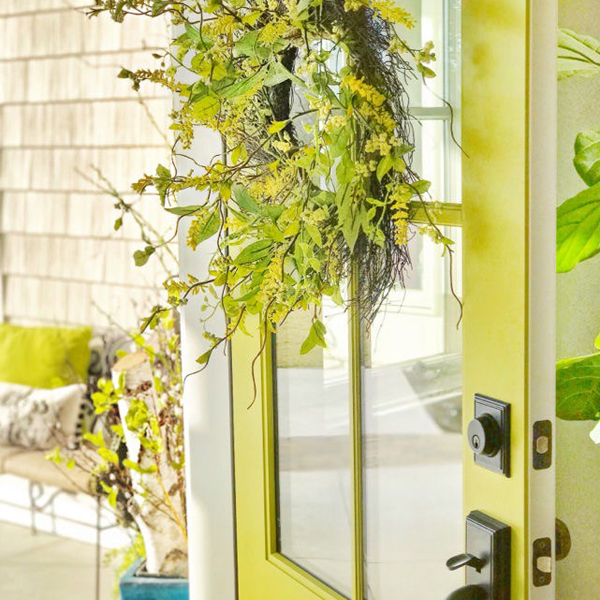
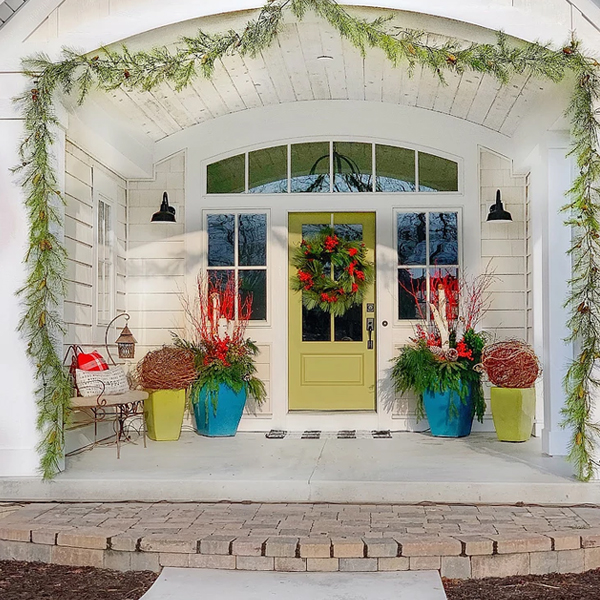
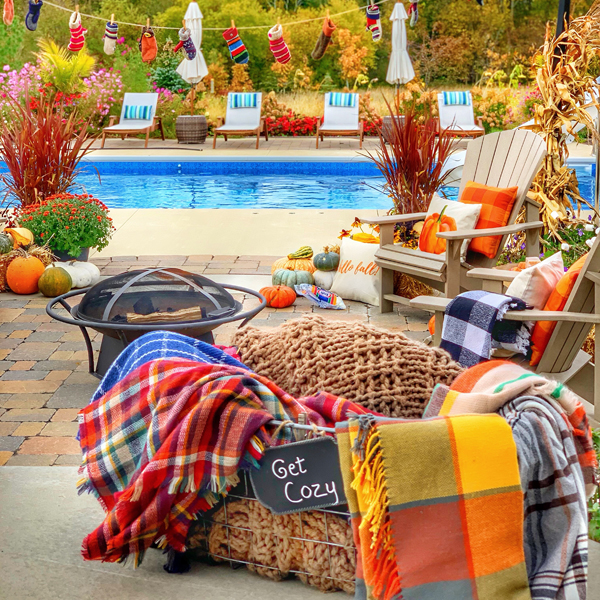
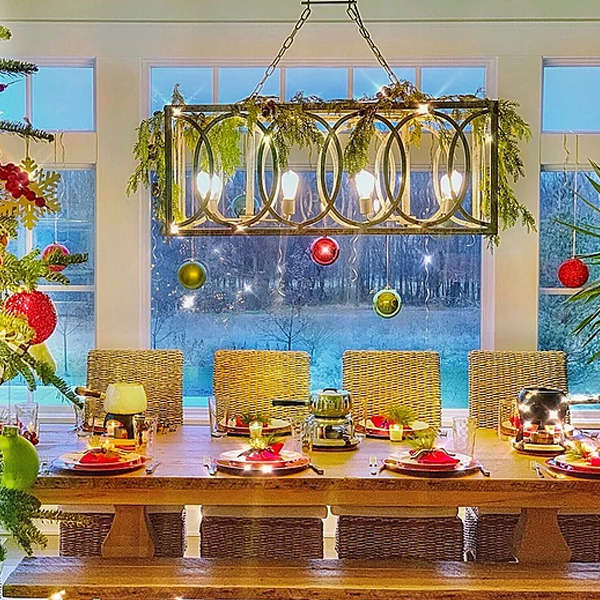
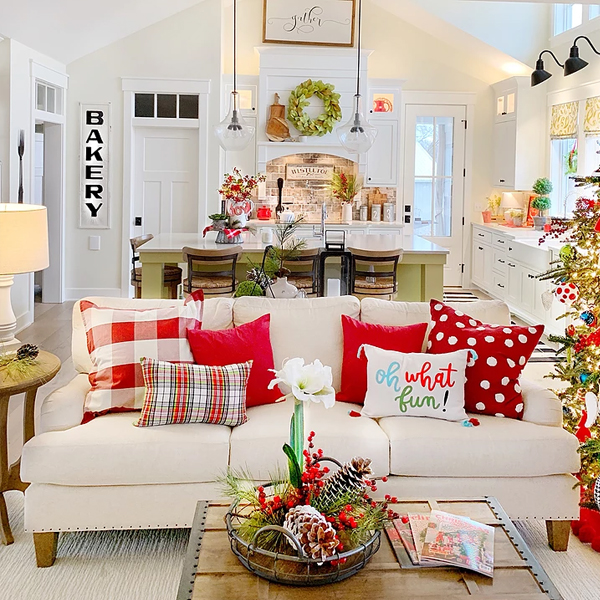
Looks amazing and such helpful info!!
You’re sweet Mr. P & P!
Man I’m learning a ton, thanks! I didn’t realize how much I didn’t know, haha
Thank sweet friend! That’s definitely encouraging!
Good Morning Tracy
Well your garden is just stunning and so is your home. I love how you garden, you are so organized which I love. I am amazed you know so many of the names of plants and flowers. I always forget them. well I know a bunch but not all like you
I have learned quite a lot from your instagram tips, love anything that has to do with gardening, its my passion*
great blog post as usual***
enjoy this wonderful day
deezie
I so appreciate that Deezie, Thank you!
Tracy, Your gardens are absolutely stunning!!! You have amazing taste and a true talent! Thanks for sharing! I thoroughly enjoyed your post!
Blessings, Ashleigh
That sure is encouraging!Thanks Ashleigh
Hi Tracy,
Thanks for the informative writing and beautiful photos.
My challenge, that you seem to have a handle on, is plant placement. I don’t have the lovely round swathes of color, like you do. How many of each type of perennial do you typically group together to get that nice area of each color? I tend to be very linear when planting, which doesn’t give me the effect I want.
Thank you,
Shelley
So often I do 3 to 5 plants in an area depending on the size of plants I buy.
Loved this Tracy. Will definitely be referring back to it. Great ideas!!
Thank you so much Lynn!
Love this!!! I’m starting the Fall planting list for my front flowerbeds!!! Hopefully, I can relocate the deer to someone else’s yard!
Gosh I’m so glad you’re getting that fence! I’ll be excited to see all you plant this fall!
I am so happy you posted this blog. So much of the things I NEED to know. THANK YOU! I am pinning this for easy access to it when I start working on redoing my flower beds.
This is better than a gardening book! I’ve never thought of planning for year round beauty! Excellent advice! I’m really lookin forward to more of these posts! Thank you!!!
I sure appreciate that feedback ..thank you friend.
Thanks so much for the info! I am planning a garden bed in front of my home, this is great info!
So glad to hear that Christy! Cant wait to see it!
I love all of this info Tracy, thank you so much for all of this, this shows everything we ever need to know! I love your gardens & home so much & enjoy watching you!!!
Awww thank you Sandy!